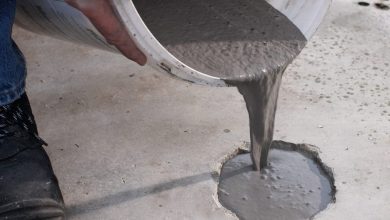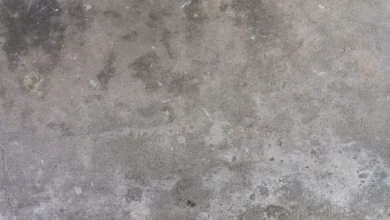How Long Does It Take for Concrete to Fully Cure
Concrete typically takes 28 days to fully cure and reach its maximum strength.
However, it becomes solid enough to walk on without leaving footprints after 24 to 48 hours.
After seven days, it is cured to at least 70% of its full strength, and it can be driven on, though heavy equipment should be avoided.
Factors such as moisture and temperature can affect the drying time of concrete.
Proper moisture levels are important for curing, and extreme temperatures should be avoided.
It is important to note that some concrete mixtures may cure faster but may not have the same strength and stability as traditional formulas.
Adding accelerants can expedite drying time, but it may impact its strength and stability.
Did You Know?
1. Concrete curing time can vary significantly depending on several factors such as temperature, humidity, and concrete mix design. On average, it takes around 28 days for concrete to fully cure, but this can vary from as little as a few days to as long as several months.
2. The process of concrete curing is not just about drying out. Instead, it involves a chemical reaction called hydration. During hydration, water reacts with cement particles, forming a gel-like substance that hardens over time. This curing process continues even after the concrete has initially set.
3. Contrary to popular belief, concrete does not dry out by evaporating water. Instead, it relies on a process called “moisture retention.” During curing, moisture is retained in the concrete to ensure proper hydration and strength development. This is why curing is often done by covering the concrete with plastic or using wet burlap or mats.
4. The temperature during concrete curing plays a crucial role in its strength development. Higher temperatures can accelerate the chemical reaction, leading to faster curing. However, if the temperature is too high, it can also cause cracking or uneven curing. On the other hand, extremely cold temperatures can significantly slow down the curing process.
5. Interestingly, there is a phenomenon called “autogenous shrinkage” that occurs during concrete curing. This shrinkage happens due to the self-desiccation of the concrete, where it loses water and the small empty spaces within the material decrease in size. This can result in internal stresses, potentially leading to cracking if not properly managed.
Concrete Drying Time: 24 To 48 Hours For Walking And Driving
Concrete is a popular choice for construction projects because of its durability and strength. It is crucial to understand the time it takes for concrete to cure completely. Although concrete may dry to the touch within a few hours, it usually requires 24 to 48 hours to become solid enough to walk or drive on without leaving footprints or tire marks.
During the initial drying period, the cement in the concrete mixture bonds with water molecules, resulting in hardening and increased strength. It is important to note that concrete continues to harden over time and never fully cures. The complete curing process typically takes approximately 28 days, allowing the concrete to reach its maximum strength.
Within 24 to 48 hours, the concrete should be sturdy enough for foot traffic without causing any damage or leaving imprints. However, it is essential to avoid using heavy equipment or vehicles on the concrete during this early drying stage to prevent potential damage.
The Importance Of Curing In Concrete’s Physical Properties
Curing is a vital process that significantly influences the physical properties of concrete. It refers to the steps taken to control the moisture content and temperature of freshly placed concrete during its early days. Proper curing ensures that the concrete develops the desired strength, durability, and resistance to cracks and other forms of damage.
Curing allows the concrete to continue the hydration process, wherein the cement particles react with water to form strong chemical bonds. These bonds contribute to the overall strength and structural integrity of the concrete. If curing is not properly carried out, the concrete may dry too quickly, resulting in weak and brittle structures.
Additionally, curing helps to reduce the chances of shrinkage cracks and surface defects on the concrete. By preventing excessive moisture loss, curing allows the concrete to maintain its moisture levels, which in turn minimizes the risk of cracks and ensures a more aesthetically pleasing finish.
Common Methods For Curing Concrete: Water And Membrane
There are two common methods used for curing concrete: water curing and membrane curing.
Water curing involves keeping the concrete surface continuously moist by spraying or covering it with water. This method prevents the loss of moisture from the concrete, allowing it to hydrate properly and develop strength over time. Water curing is often preferred for smaller concrete projects or when additional layers, such as mortar or plaster, will be applied to the surface.
Membrane curing, on the other hand, involves the application of a thin layer of moisture-retaining material, such as a curing compound or plastic sheet, over the concrete surface. The membrane acts as a barrier, preventing the escape of moisture from the concrete and promoting proper hydration. This method is commonly used for larger concrete surfaces and horizontal slabs.
Both water curing and membrane curing have their advantages and disadvantages, and the choice of method depends on various factors, including the project requirements, time constraints, and environmental conditions.
- Water curing:
- Keeps concrete surface continuously moist
- Prevents loss of moisture
- Suitable for smaller projects and when additional layers will be applied
- Membrane curing:
- Involves the application of a thin layer of moisture-retaining material
- Acts as a barrier to prevent moisture escape
- Commonly used for larger surfaces and horizontal slabs
Factors Affecting Concrete Drying Time: Moisture And Temperature
Several factors can significantly influence the drying time of concrete. Moisture and temperature are key considerations.
- Proper moisture levels are crucial for effective curing.
- Too little water in the concrete mixture can result in weak and brittle structures, while too much water can lead to excessive shrinkage and cracking.
- Maintaining the right moisture balance during the curing process ensures that the concrete develops the desired strength and durability.
Temperature also plays a vital role in concrete drying time.
- Higher temperatures facilitate faster moisture evaporation, accelerating the overall drying process.
- However, extreme heat can be detrimental to concrete workability and may cause cracks.
- It is essential to strike a balance between ensuring a reasonable drying time and avoiding excessively high temperatures that could compromise the quality of the concrete.
On the other hand, cold temperatures can significantly slow down the concrete drying process.
- When working with concrete in temperatures below 4 degrees Celsius or 40 degrees Fahrenheit, special pouring techniques are required to prevent freezing and ensure proper curing.
- Below -6 degrees Celsius or 20 degrees Fahrenheit, it is generally advised not to pour concrete due to the increased risk of damage and compromised strength.
Special Considerations For Pouring Concrete In Cold Temperatures
Cold temperatures pose unique challenges when it comes to pouring concrete. It is important to follow specific guidelines to ensure that the concrete cures properly and maintains its strength and durability in freezing conditions.
To successfully pour concrete in cold temperatures, the use of appropriate insulation and heating methods is necessary. These measures help prevent the concrete from freezing before it has a chance to cure fully. Warm water can be used to mix the concrete and adjusting the temperature of the mixing water can help raise the overall temperature of the mixture.
To further protect the concrete during the curing process, insulated blankets or hay bales can be placed over the freshly poured surface. These materials help retain heat and slow down the cooling process, allowing the concrete to cure at a desirable rate.
Understanding the drying time and curing process of concrete is crucial for successful construction projects. Concrete typically needs 24 to 48 hours to dry enough for foot traffic and about 28 days to reach its full effective strength. The curing process through proper moisture control and temperature management is vital to ensure the desired physical properties of the concrete. Factors such as moisture levels and temperature can significantly impact the drying time, and special considerations must be taken into account in colder temperatures.
By following appropriate curing methods and ensuring ideal conditions, construction professionals can achieve strong, durable, and aesthetically pleasing concrete structures.
Check this out:
Frequently Asked Questions
How long does it take for concrete to 100% cure?
The process of concrete curing typically takes about 25-28 days for it to reach its maximum strength. During this time, the concrete undergoes a chemical reaction known as hydration, where water molecules react with cement particles to form a solid structure. While the setting time of concrete may only require a day or two, it is crucial to allow sufficient curing time to ensure its durability and structural integrity in the long run.
How long does 4 inches of concrete take to cure?
The curing process for a 4-inch slab of concrete usually takes around 28 days. During this time, the chemical reaction between the cement and aggregate results in the formation of hardened concrete. However, after 24 to 48 hours, the concrete can be strong enough to handle light foot traffic. It’s important to note that the curing process is different from drying, as concrete does not actually dry but undergoes a chemical transformation to reach its full strength.
Does it take 7 years for concrete to cure?
While concrete does continue to cure indefinitely, it is generally agreed upon that a 28-day period is necessary for it to reach a practical strength. During this time, a significant portion of the hydration process occurs, leading to the formation of a strong and durable material. While concrete can continue to gain strength beyond this point, the initial 28-day period is crucial for achieving a suitable level of strength for most practical purposes.
Although the 28-day curing period is typically sufficient, it is important to note that concrete’s curing process is highly variable and can be influenced by various factors such as temperature, humidity, and the specific mix used. These factors can impact the rate at which concrete gains strength, but in general, a 28-day curing period is considered a reliable benchmark for achieving a practical level of strength.
How strong is concrete after 7 days?
Concrete is known for its rapid strength gain in the early stages after casting. After 7 days, concrete typically achieves around 65 percent of its ultimate strength. This means that within a week, concrete establishes a solid foundation of strength, indicating its ability to withstand various stresses and loads. However, it is important to note that concrete continues to gain strength beyond the 7-day mark, and its strength development increases significantly in the following weeks.



